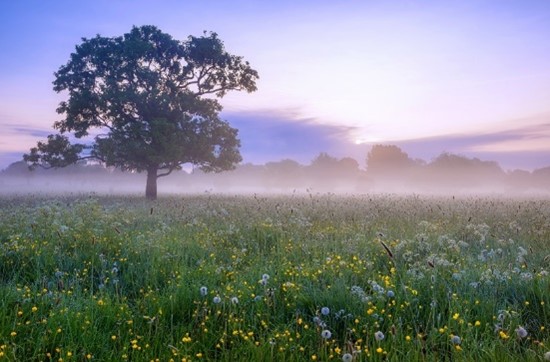Productivity According to the Rhythms of Nature
Productivity According to the Rhythms of Nature

In the rush of modern life, catching a glimpse of the rhythms of nature offers a profound sense of ease. Nature moves with a steady cadence, a dance of seasons that reminds us of a time when human activities were closely tied to these natural cycles – whether it’s the sudden flourish of green growth after winter, the building score of birdsong in spring, or the coordinated hush as critters of the forest, meadows, and waters sequester under the watch of changing leaves. Observing this natural rhythm can be a balm to our busy lives, offering a reminder that there is a time for every purpose under the sun.
As cultures have "advanced," much of our work has become seasonless, detached from the cycles of nature. This detachment has its conveniences: we can arrange our schedules according to our preferences, family needs, or organizational demands. The flexibility allows us to feel more in control of our timelines, immune to the whims of late frosts, overrun banks, or overly dry springs. However, while there is comfort in this independence from nature's unpredictable patterns, we miss the valuable lessons embedded in the natural rhythms.
Rediscovering natural rhythms in modern life
Indeed, while there is a certain comfort and convenience gained from working detached from the rhythms of nature, there are things we can observe that are still valuable to human understanding and recognition.
In her book, You Are a Tree, writer Joy Marie Clarkson explains that just as trees bear fruit in their season, humans should also not expect round the clock productivity and visible progress. There are times for growth, times for rest, and times for bearing fruit. Each of these phases is essential and reflects a healthy, natural rhythm. Clarkson contrasts this natural rhythm with the modern tendency to view ourselves as machines, expected to perform constantly without rest. This metaphor can lead to feelings of inadequacy and burnout when we fail to meet these unrealistic expectations.
Feeling unproductive or exhausted does not mean something is wrong, Clarkson points out – it simply means one is in a different season, akin to winter, where the focus is on invisible fortification and preparation for future productivity. Seeing our personal and professional journey through the metaphor of a tree throughout seasons allows us to take on a far more compassionate and realistic understanding of our own lives and capacities.
Trees are not lonely creatures. In fact, trees themselves are incredibly communal, as writers like German forester, Peter Wohlleben, famously shared in his book The Hidden Life of Trees. Their roots interconnect and support each other through adversity and illness, much like how people can sustain one another through difficult times. Clarkson, too, emphasizes the importance of being grounded in nourishing relationships and environments, which support us through all seasons of life.
By reconnecting with these natural rhythms, we can foster a more balanced and humane approach to our productivity and well-being, recognizing that just like nature, we have seasons that shape our growth and rest.
Take stock of your season
While few will be compelled to take to the forests or farmlands to draw closer to nature’s rhythm, there is immense value in recognizing that we as women, as humans, are a part of this dance of nature and benefit from understanding the innate rhythms of work and rest, internal and external, that our flora and fauna counterparts still reflect.
To help gauge what season you are in and what you need to thrive today, consider the following questions. Better yet, grab a journal, step outside, and immerse yourself in nature – whether to your favorite nature preserve or a tree outside your office building. Take a deep breath, pause, and take note of the world around you. Then begin.
- What season do you feel you are currently in – growth, rest, or harvest? What signs from your personal or professional life can help you identify this season?
- How does your current work schedule align or conflict with the natural impulses of this season? Are you in flow with the demands or fighting them?
- What are your current expectations for productivity? How can you adjust your goals to be more in line with the concept of different seasons of external productivity and inward rest?
- What small changes can you make to your routines or commitments to better reflect the season you are in?
- How do you respond to periods of low productivity, or ‘rest’? Are you compassionate with yourself during those times, recognizing that this is part of the process? What practices can you adopt to support your natural rhythms and thrive in each season?
By contemplating these questions, you can gain a deeper understanding of your personal cycles, take ownership of them, and find ways to be more content and productive through each season – even if productivity means allowing your mind, body, and spirit the rest it needs to prepare for the next ‘springtime’ flourish.

